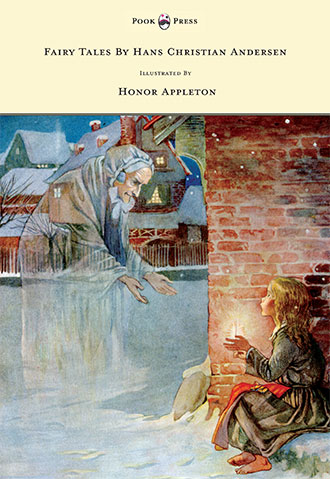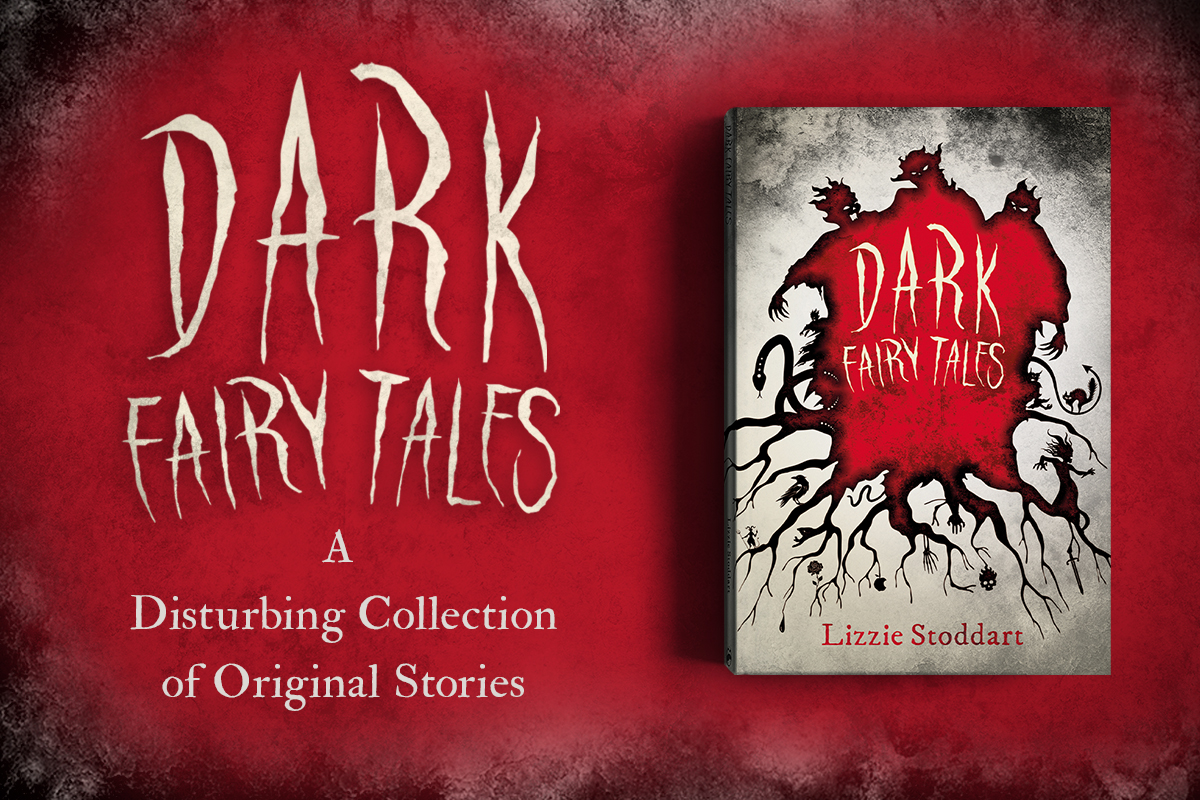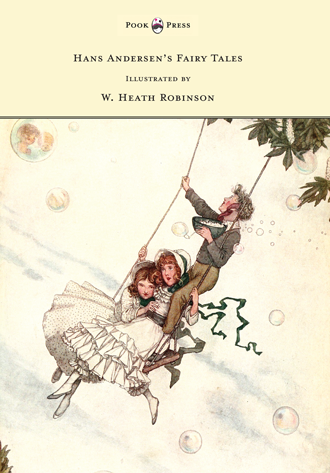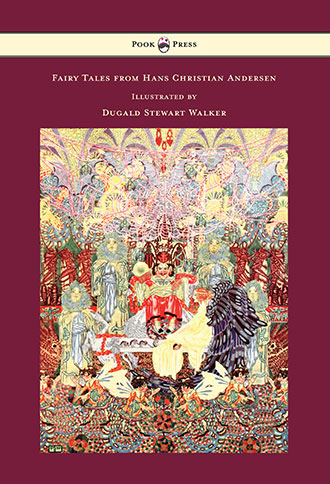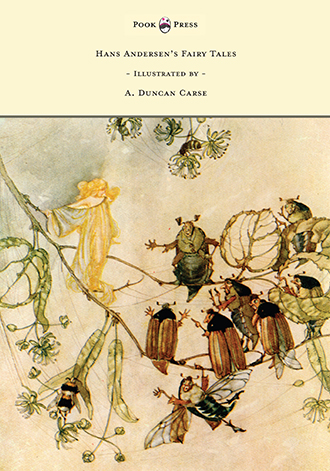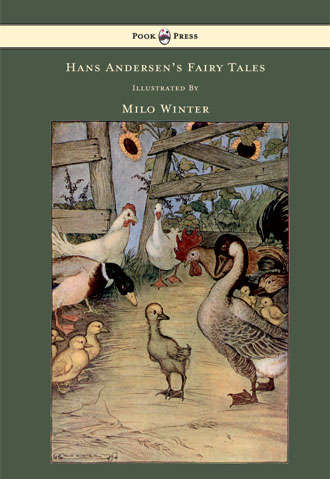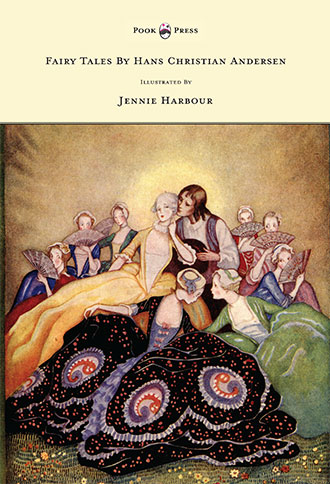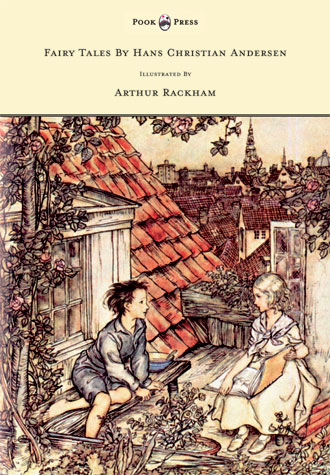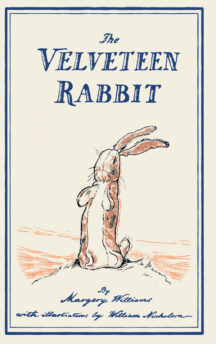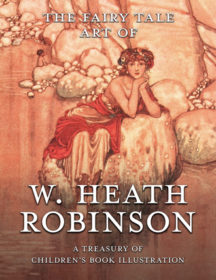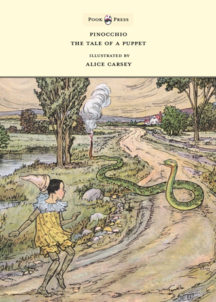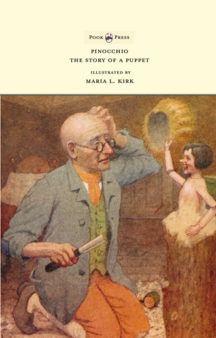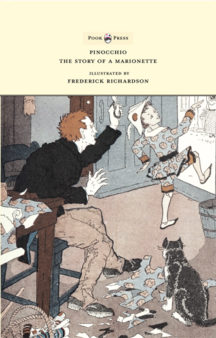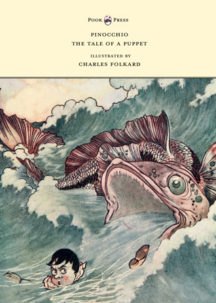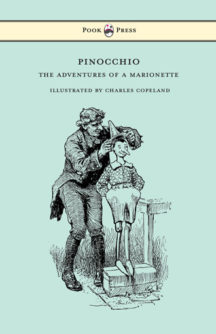The Girl Who Trod on a Loaf – A Hans Christian Andersen Tale
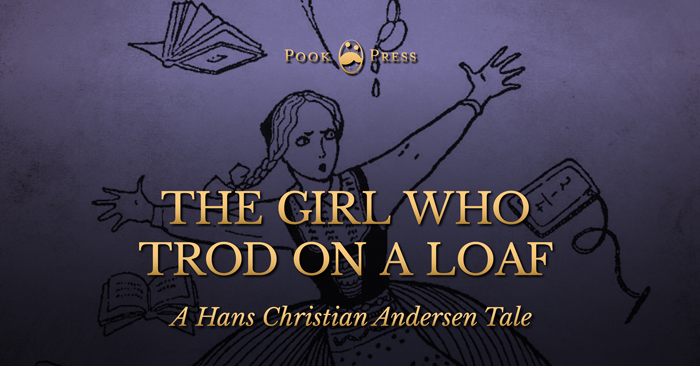
The tale of a pretty young girl, a pair of fine new shoes, and a lesson about the consequences of selfishness.
The Girl Who Trod on a Loaf
– A Hans Christian Andersen Tale –
She was only a poor child, but she was proud and arrogant. When quite a little girl, it was one of her pleasures to catch flies and cruelly tear off their wings, so that they were only able to crawl, and she would take cockchafers and beetles and stick them through with needles; then she would put them on a little scrap of paper or green leaf,
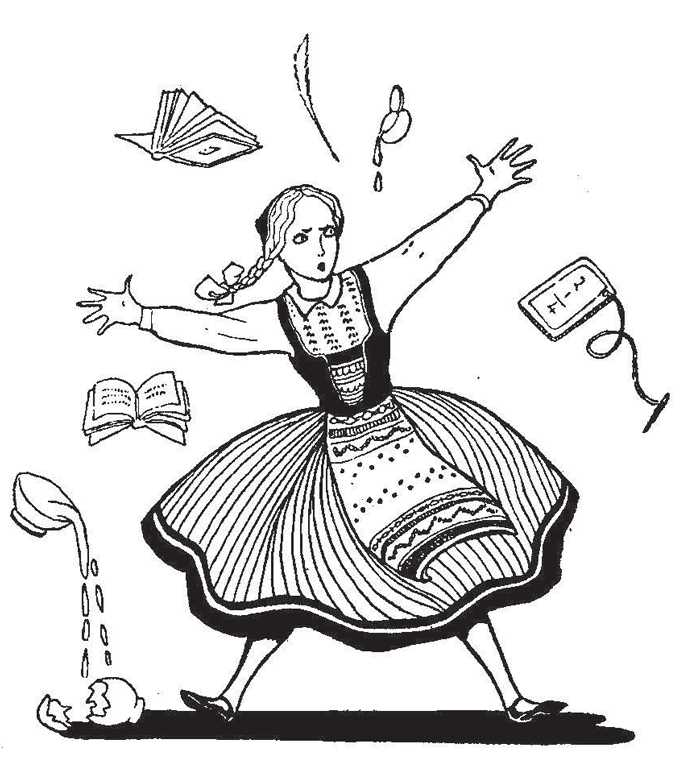
so that the creatures might hold fast to it and turn round and round to get off the pin. “The cockchafer is reading,” little Inger would say; “just see how he turns over the leaf.”
As she grew older and bigger, she became worse instead of better; and, unfortunately, she was rather a pretty girl, otherwise she would have been punished more often than she was, instead of being reproved by her parents.
“You will meet with some terrible misfortune some day,” her mother said to her. “You have often trodden on the corner of my apron as a child, and I fear that one day you will tread on my heart.”
And, alas! so she did.
So Inger put on her smart clothes and her new shoes.
One day she went into the country to stay with some rich people, who treated her as though she were their own child. They dressed her in such fine clothes that her pride and arrogance daily increased. When she had been staying with these people about a year, her hostess said to her, “Don’t you think you ought to go and see your parents, Inger?”
So she started to go; but it was not because she wished to see them, it was rather that they might see what a fine girl she had grown, and what fine clothes she was wearing.
When she reached the village where her parents lived, she saw the young girls and men gossiping together, and her own mother amongst them. Inger’s mother was sitting on a stone, with a bundle of firewood across her knees, which she had just returned from gathering in the forest. Inger turned away ashamed, for with all her fine clothes she was too proud to remember the poor woman who sat on the stone was her mother, and had gathered sticks.
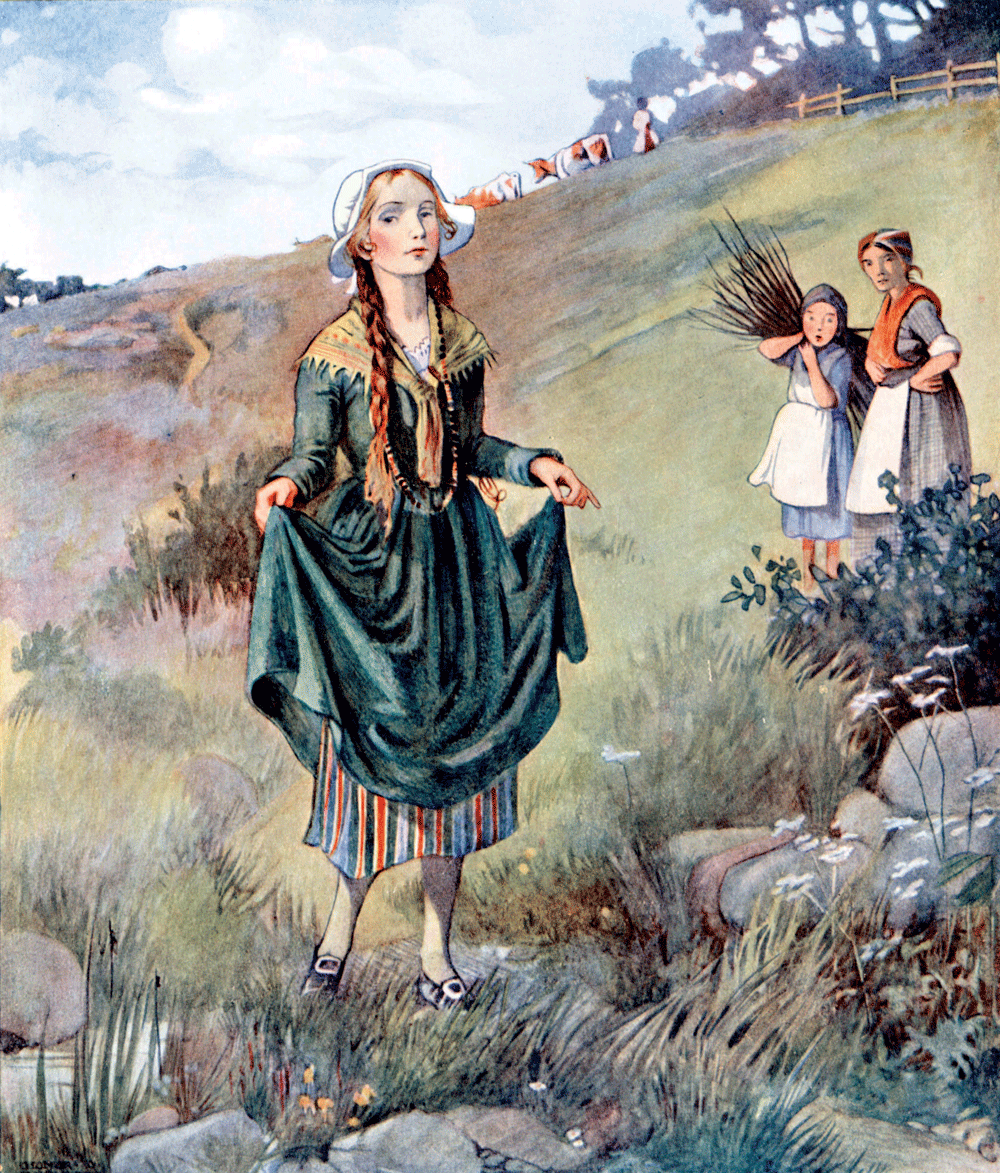
The Girl Who Trod on a Loaf Illustration by Honor C. Appleton
About six months passed by, and her hostess again said to her, “You ought to go home now and see your old parents, Inger. I will give you a loaf of wheaten bread which you can take with you; I am sure they will be very glad to see you.”
So Inger put on her smart clothes and her new shoes, and lifted her skirts around her, so that she might keep her shoes clean and smart, and for this we do not blame her. But when she came to the path which crosses the common, the water stood in large pools, and it was muddy, so she flung the loaf into the middle of one of the pools so that she might tread on it and thus pass over without wetting her feet. As she stood on the loaf with one foot raised, the loaf sank deeper and deeper, until there was only a black bubbling mass to show where she was lost.
And where did she go? She sank deep into the ground, down to the marsh witch, who was brewing. The marsh witch is aunt to the elf-maidens, who are fairly well known. Songs have been written about them, and pictures have been painted; but about the marsh witch it is only known that when the steam arises from the meadows it is because the marsh witch is brewing.
So to the marsh witch little Inger sank, and this place few people can put up with long. A mud hut is a lovely place compared with the marsh witch’s brewery.
Little Inger trembled in every limb; she was so cold that she was just like a piece of marble. Her foot was still stuck in the loaf, and it dragged her down and down, as if she were a piece of straw.
It would be an endless task to attempt to tell you how the people in the marsh witch’s brewery suffered. It was her punishment to stand with her foot chained to the loaf, looking like a statue. She could turn her eyes, but her neck she could not turn, for it was too stiff. Her clothes seemed to be covered with all the filth of the marsh witch’s brewery. A little snake had also entwined itself in her hair and was hanging down her back, and an ugly toad peered from every fold in her dress, which barked like a poodle with asthma. It was all very disagreeable, but the rest of them down there looked just as dreadful. She comforted herself with this thought.
But worse than anything was the terrible hunger which she constantly felt. Could she not stoop down and break off a piece of the loaf upon which she was standing? No! her back was stiff, her hands and arms were stiff, and her whole body was like a column of stone. She was able to turn only her eyes in her head—to turn them quite round, so that she could see what was going on behind. It was a ghastly sight. And then the flies came! They crept over her face and eyes, which made her blink; but they did not go away, for they could not. Their wings had been pulled off, and the best they could do was to creep. It was an added torture to her hunger!
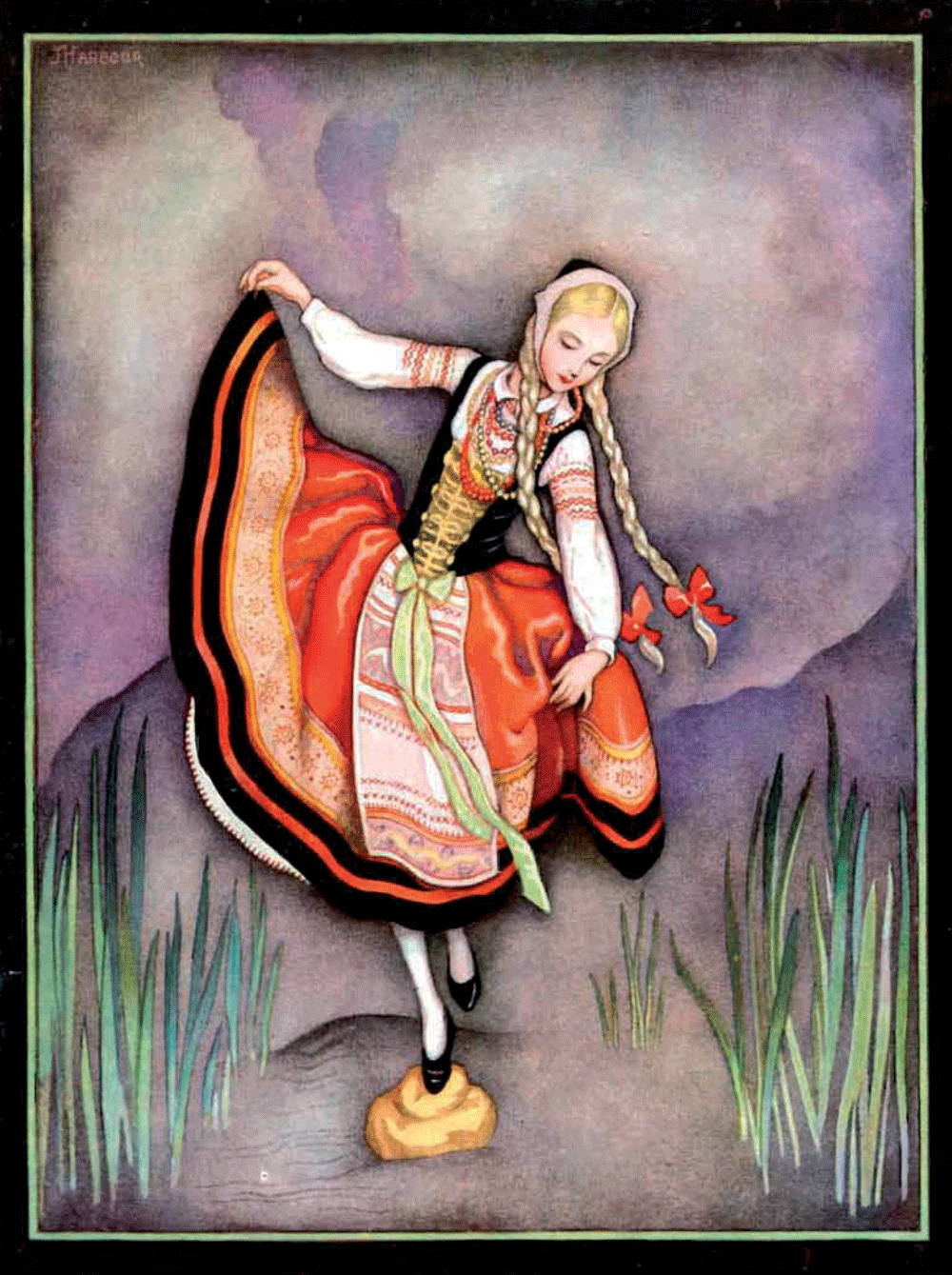
The Girl Who Trod on a Loaf Illustration by Jennie Harbour
“If this lasts very long, I shall not be able to endure it!” she cried.
But it did last, on and on, and she had to bear it. Then a hot tear fell on her head; it trickled down her face and bosom straight upon the loaf; then another fell, and after that many more. Who was weeping for little Inger? Had she not still a mother on the earth? The tears of grief such as a mother weeps for her child always make their way to the child, but they do not always lift its load of trouble; they only cause greater torment. And oh, that terrible hunger!—and yet not to be able to tear off a piece of the loaf upon which stood her foot. She felt as though she had been eating herself. She was like a thin hollow reed that seemed to attract every sound; everything that was said of her up in the world she could hear, and it was all evil and harsh. Certainly her mother sorrowed and wept for her, but for all that she heard her say, “Pride goes before a fall! It brought ruin to thee, Inger, and has grieved me greatly.”
Her mother and every one on earth knew of her sin; that she had stood upon the loaf, and that it had sunk through and disappeared, for the cowherd had told it; he had seen it from the hillside. “Oh, how greatly thou hast grieved thy mother, Inger!” said the mother; “yes, I thought it would come to this.” “Oh, I wish I had never been born!” thought Inger. “It would have been much better for me, but it can’t be helped now, so what is the use of my mother’s weeping.”
She heard how her host and hostess, who had so loved and nourished her, like good parents, had said she was a sinful child, and did not appreciate the good things of God, but trampled them under her feet. The gates of mercy would be very narrow for her to enter.
“Why did they not punish me?” thought Inger, “and have beaten out the whims I had.”
She heard that an entire song had been written about her, called “The Proud Girl who trod upon a loaf to keep her shoes clean,” and it was sung everywhere. “That I should have to suffer so much evil for that, and that every one should hear about it is hard. The others ought to be punished also for their sins. Ah, there would be a good many to punish. Oh, how I am tormented!” Then it came to her ears that her punishment was being told to the little children, and the little ones called her the wicked Inger, and said that she was so hideous in her sin that it was quite right she should be tortured. So even the little children said hard things against her.
But one day when her great hunger gnawed at her hollow form, she heard her name being spoken—her story was being told to a pure little innocent girl, and she saw that the little one was crying and praying for mercy for the proud, vain Inger. The little one said, “Oh! she will never come up again. If she were to ask pardon for her faults, would she come up again?” “But she will never ask for pardon,” was the answer. “Oh! how I wish that she would,” said the little girl, and she appeared to be quite inconsolable. “I’ll give my doll and my doll’s house if she may only come up. It is really too awful for poor Inger.”
These kind words seemed to penetrate Inger’s heart, and it no doubt did her good, for it was the first time that any one had said, “Poor Inger!” without talking about her faults afterwards.
A little innocent child was praying for mercy for her. It made her feel quite strange and as if she would like to cry herself, but she could not do so, and that again was a torture to her.
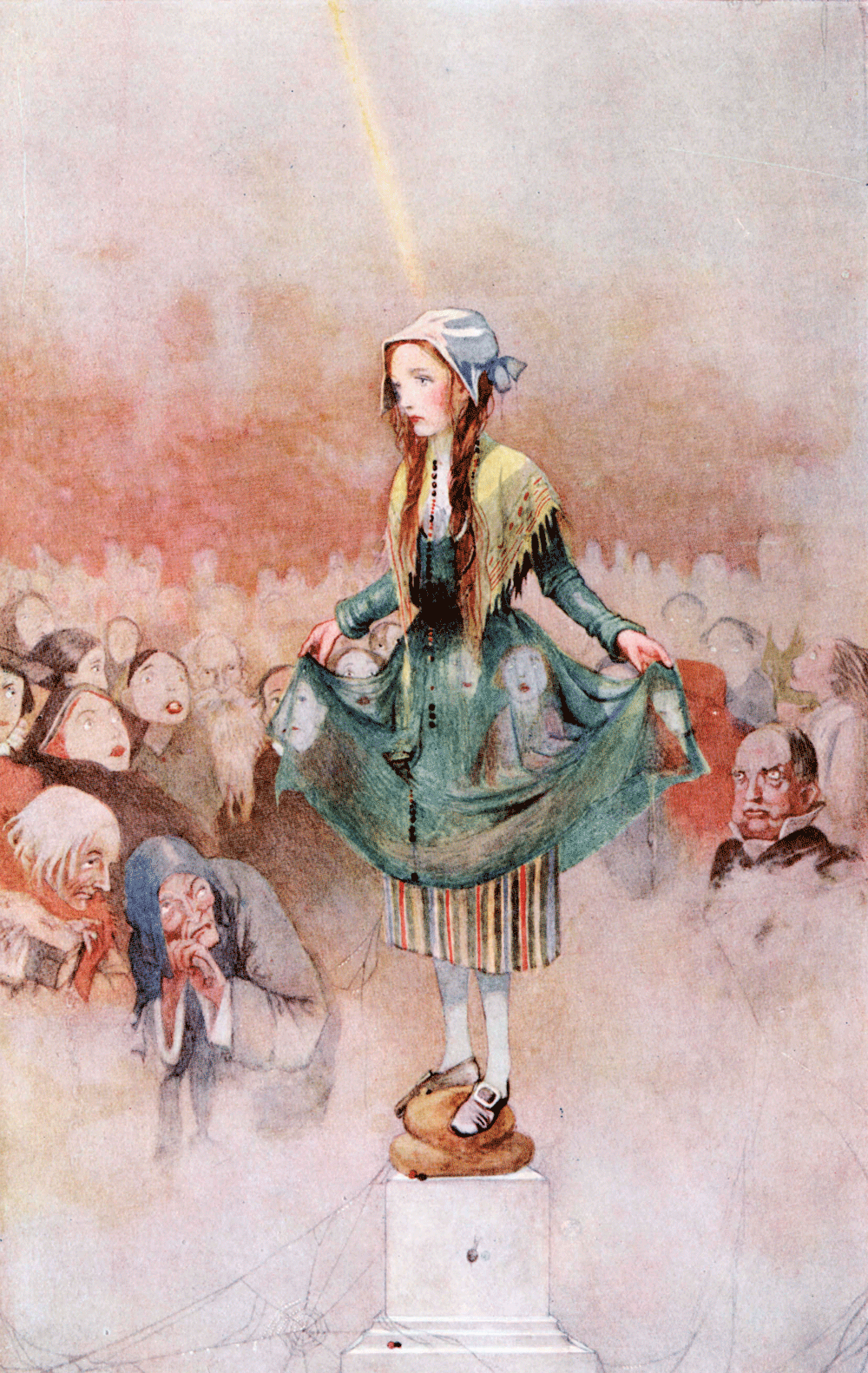
The Girl Who Trod on a Loaf Illustration by Honor C. Appleton
Her whole body was like a column of stone.
Years passed in the world above her, but where she was no change took place, and she heard herself spoken of less and less. One day she heard a sigh. “Inger, Inger, how thou hast grieved me! I said it would be so.” It was the last sigh of her mother, who had died.
Now and then she heard her name spoken by her host and hostess, and it was in the gentlest tones that the lady said, “Shall I ever see her again? Who knows what might happen?” But Inger knew that the good lady would never come to where she was, and so time went on—a long and bitter time.
Then Inger again heard her name mentioned, and she saw two gleaming stars above her. They were two gentle eyes that were closing on this earth. Many years had passed since the innocent little maid had wept about poor Inger. That child was grown into an old lady, whom God was taking to Himself. In our life it often happens that we remember things long since gone by, and she thought of poor Inger as her eyes closed to the things of this world. She burst into tears at the remembrance, as she had done when she was a little child on earth, and wept and prayed for poor Inger. Her tears and prayers were heard, and mercy was obtained, for an angel was weeping over her. It seemed as if her soul recalled every wicked deed, and Inger trembled as she cried and cried as she had never been able to do before. Repentance filled her soul, but she thought that the gate of mercy must be very small for her. Then a bright ray of light shone down upon her. Inger’s stony form changed, and as a little bird she soared up like a flash of lightning to this world.
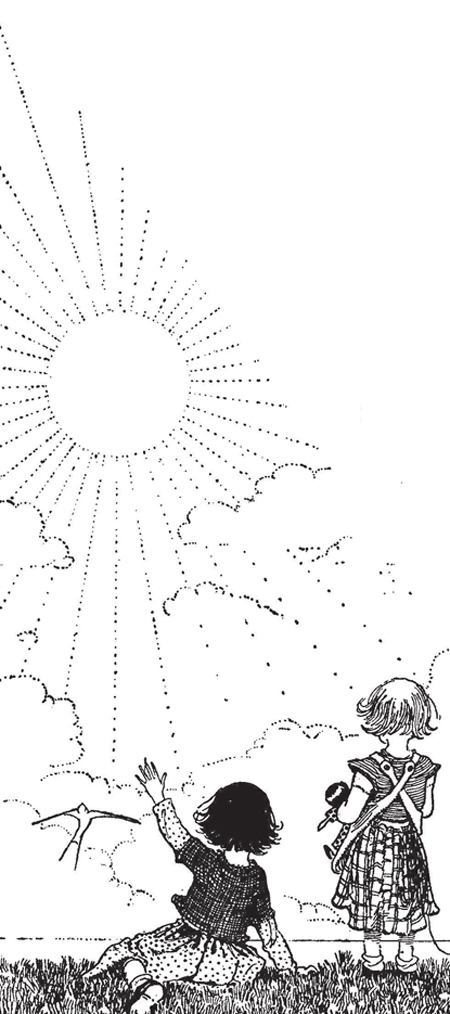
It was a fearful little bird, and seemed ashamed of being in the presence of living creatures. It tried to conceal itself in an old wall, where it sat cowering and quivering, unable to utter a sound, for it had no voice.
And now Christmas was drawing near, and a peasant who lived near the wall tied up a bundle of corn so that the birds of heaven might have a feast and a joyful time at Christmas. The sun rose and shone upon the corn, which was quickly surrounded by the birds. The winter was very severe, the ponds were covered with thick ice, and the birds of the air and the beasts of the field found it hard to get food. The little bird in the wall flew out on to the road, and in the ruts where the sledges passed, picked up here and there a grain of corn. It ate only one of these, and called to the other sparrows so that they might have some also. Then it flew to a little town, and wherever a kind hand had broken bread to place on the window-sill for the birds, it ate only a single crumb itself and gave the rest to the others.
In the course of the winter the bird had given away so many crumbs that they equalled the weight of the loaf on which Inger had stood so that she might not soil her shoes, and when the last crumb was found and given away, the bird raised her wings, spread them out, and soared up. It was seen that the wings were white.
“Look! there is a seagull,” cried the children on the beach, as the white bird dived into the sea, and soared aloft in the pure sunshine, but no one could tell where it had gone. The children said it flew straight up into the sun.
* * * * *
This tale was taken from the book:
Fairy Tales by Hans Christian Andersen – Illustrated by Jennie Harbour
This collection, The Fairy Tales of Hans Christian Andersen – with Honor Appleton Illustrations is decorated with the magnificent colour and black-and-white artwork of Honor C. Appleton. It contains some of Andersen’s best stories, including such well-known and loved tales as ‘The Little Mermaid, ‘The Steadfast Tin Soldier’, ‘The Ugly Duckling’, ‘The Snow Queen’, ‘The Little Match Girl’ and ‘The Red Shoes’.
Shop the Tale
Discover this original tale, among many other macabre versions of your most beloved classics, in our collection of disturbingly dark fairy tales.
If you have enjoyed reading the story The Girl Who Trod on a Loaf by Hans Christian Andersen, discover more wonderful fairy tales in our Fairy Tale Library.

